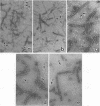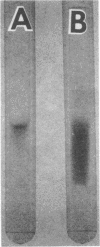Abstract
Three piliated bacterial species were exposed to ultraviolet light (7 X 10(3) microW/cm2), and the effect of increasing duration of irradiation on the integrity of the somatic pili was quantitated by negative-stain electron microscopy. Heavily piliated Proteus mirabilis became devoid of pili after 20 min of irradiation, but Escherichia coli and Neisseria gonorrhoeae required 40 min for complete depiliation. Partially purified proteus pili underwent progressive loss of structural integrity with increasing doses of irradiation as determined by negative staining and nephelometry, suggesting that ultraviolet light exerted an effect directly on the pili themselves. Sodium dodecyl sulfate-polyacrylamide gel electrophoresis demonstrated that new, small molecular weight fragments appeared after irradiation of purified E. coli pili, suggesting that cleavage of the peptide chain rather than disassociation of pilin monomers accounted for the loss of pili structure. Ultraviolet irradiation also inhibited the ability of piliated bacteria to bind to human buccal epithelial cells. These observations indicate that the ultrastructural integrity and function of pili can be disrupted by ultraviolet light.
Full text
PDF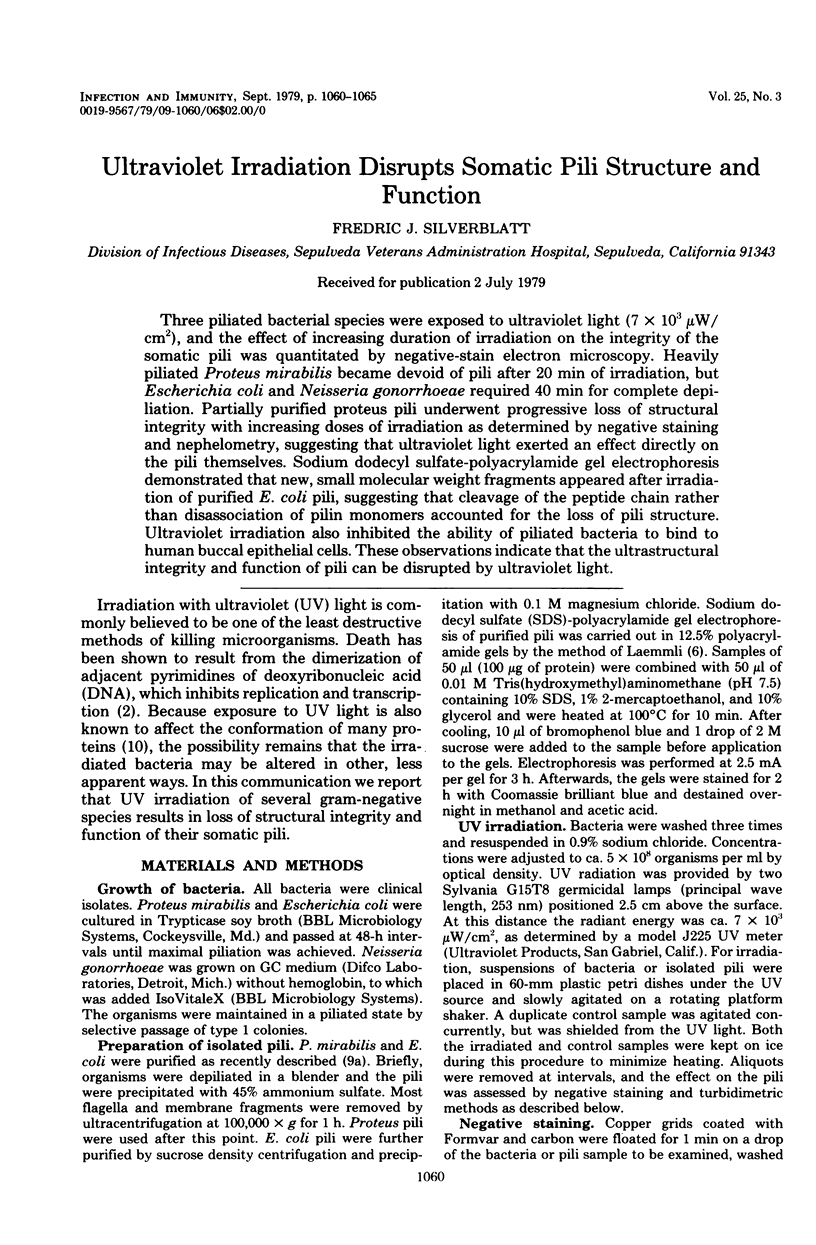
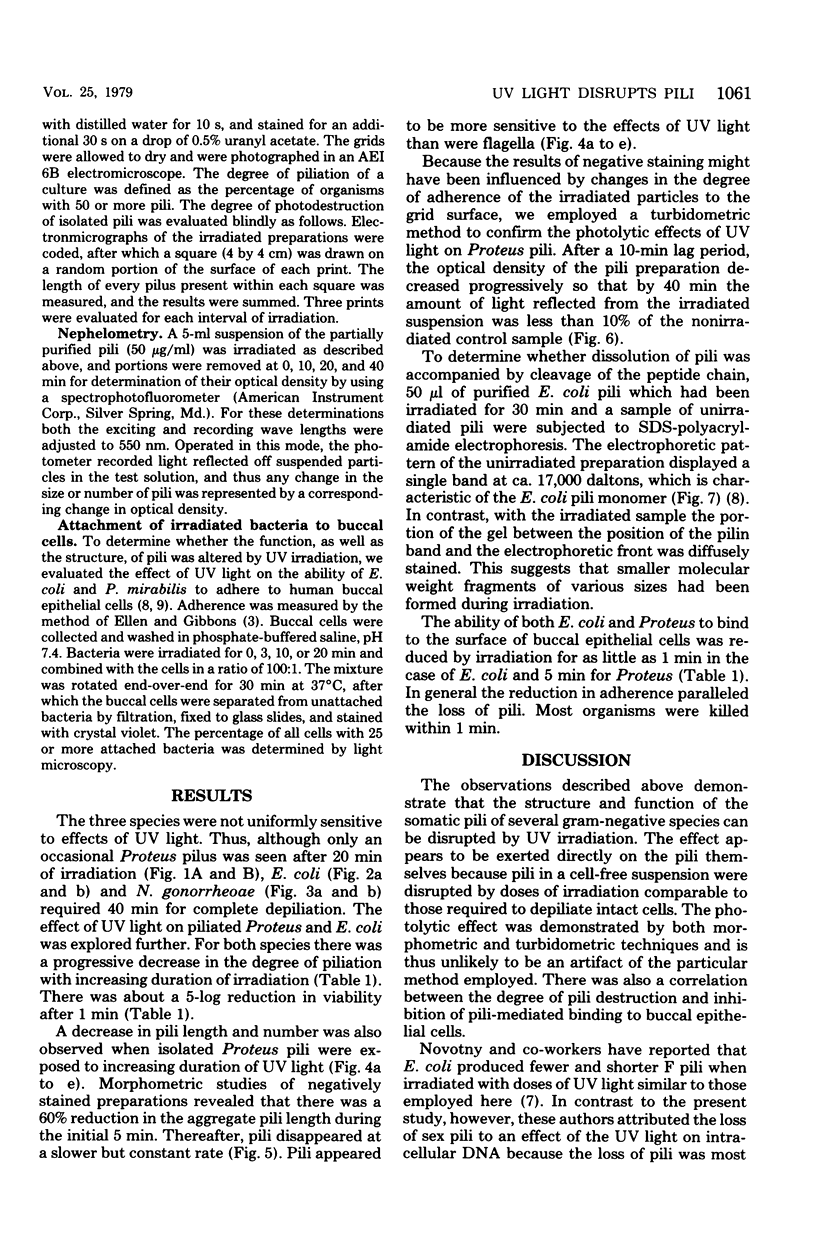
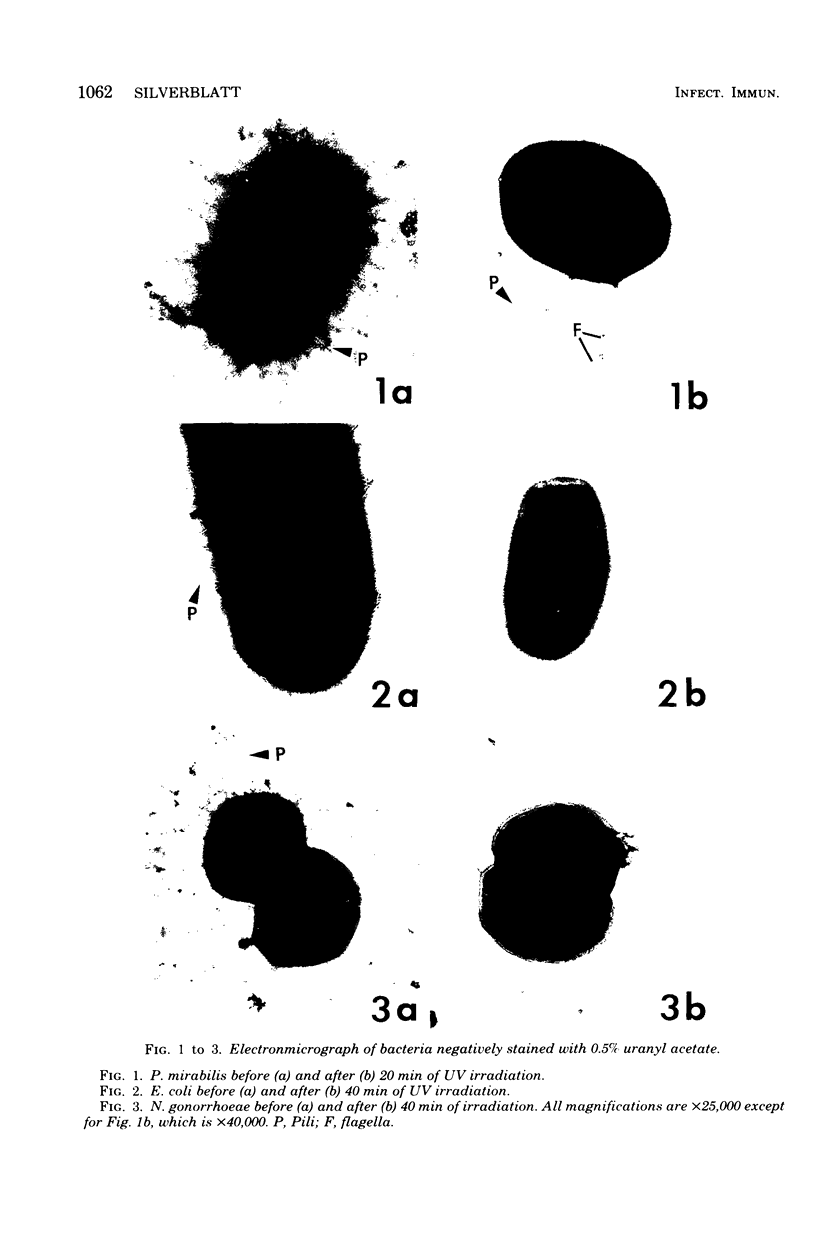
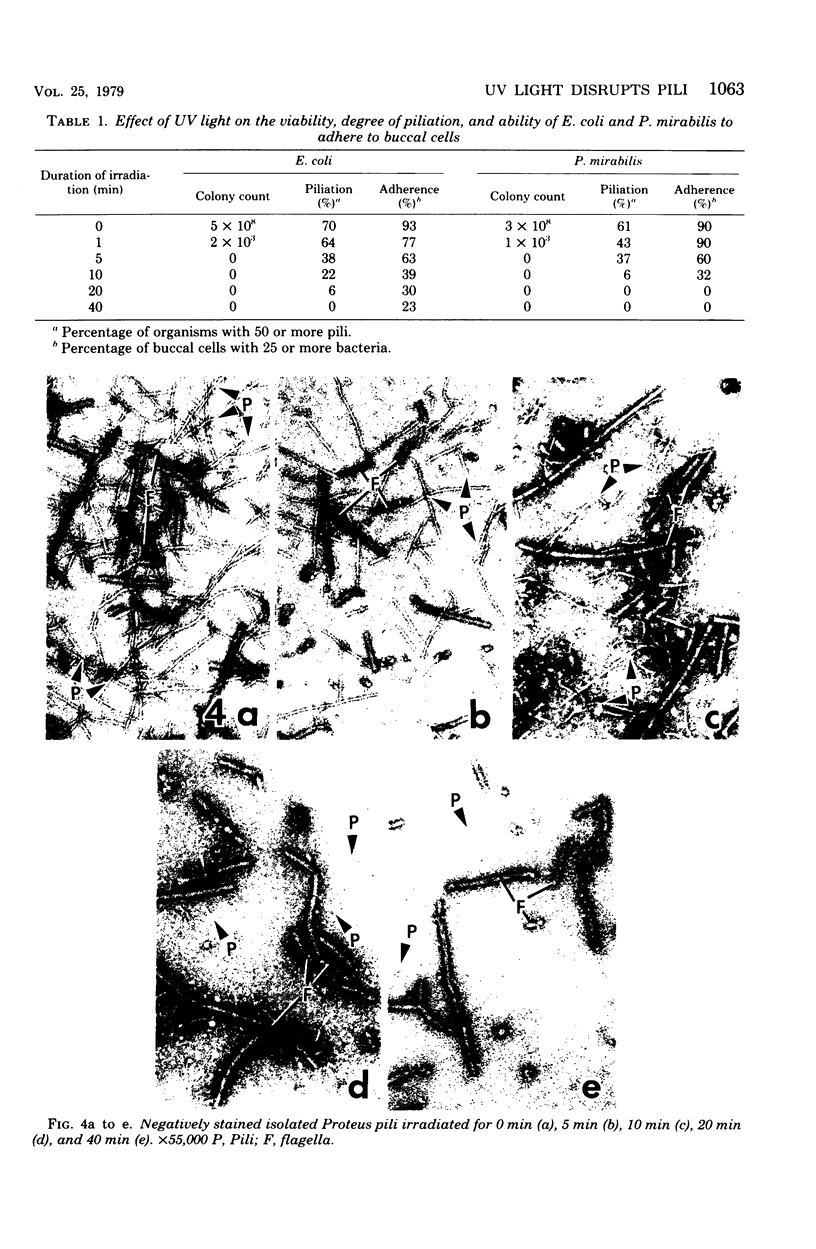
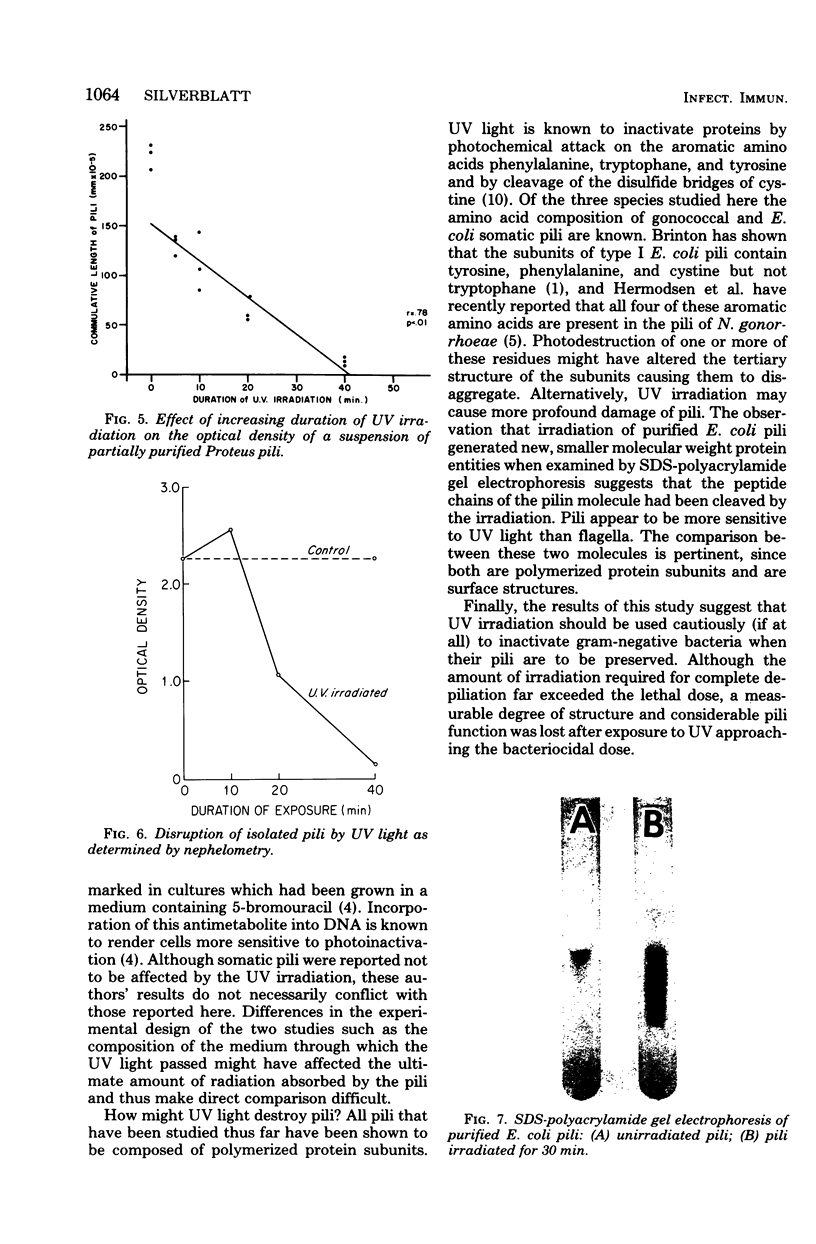
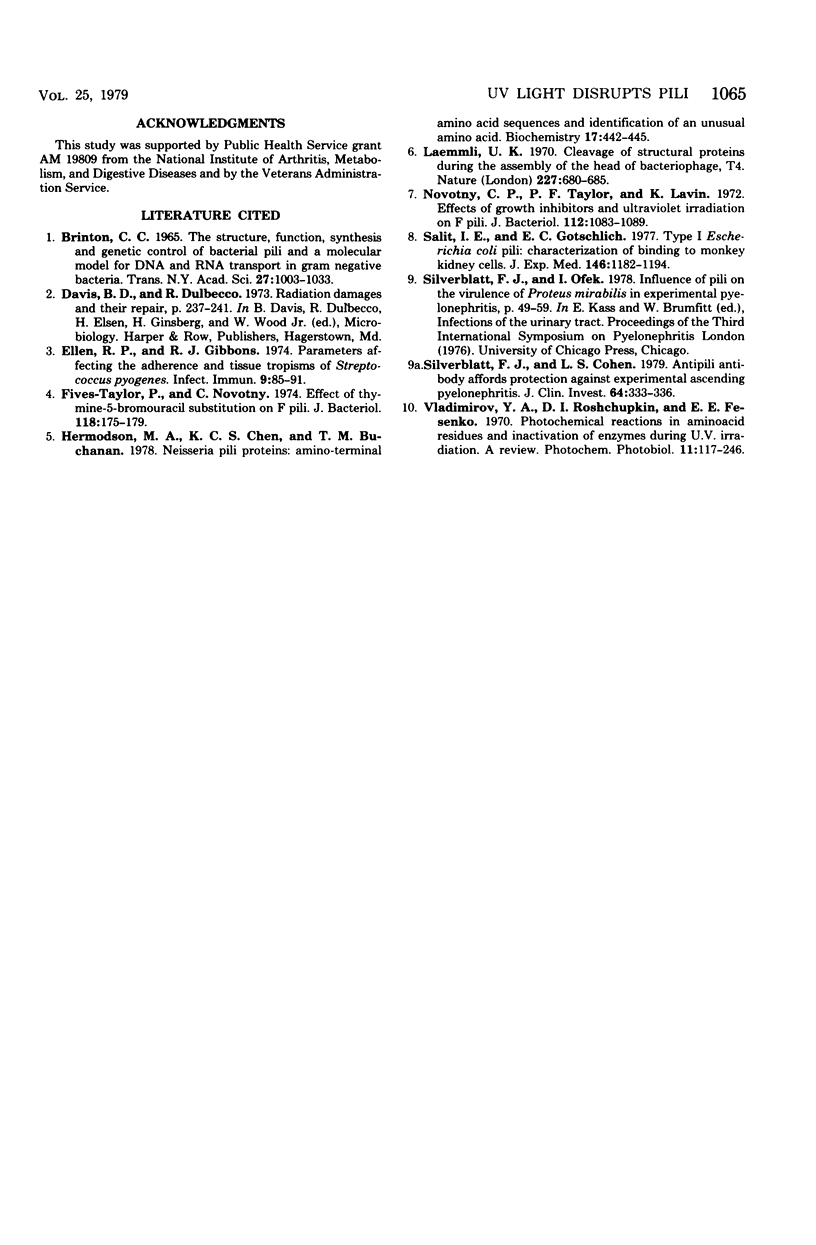
Images in this article
Selected References
These references are in PubMed. This may not be the complete list of references from this article.
- Brinton C. C., Jr The structure, function, synthesis and genetic control of bacterial pili and a molecular model for DNA and RNA transport in gram negative bacteria. Trans N Y Acad Sci. 1965 Jun;27(8):1003–1054. doi: 10.1111/j.2164-0947.1965.tb02342.x. [DOI] [PubMed] [Google Scholar]
- Ellen R. P., Gibbons R. J. Parameters affecting the adherence and tissue tropisms of Streptococcus pyogenes. Infect Immun. 1974 Jan;9(1):85–91. doi: 10.1128/iai.9.1.85-91.1974. [DOI] [PMC free article] [PubMed] [Google Scholar]
- Fives-Taylor P., Novotny C. P. Effect of thymine-5-bromouracil substitution on F pili. J Bacteriol. 1974 Apr;118(1):175–179. doi: 10.1128/jb.118.1.175-179.1974. [DOI] [PMC free article] [PubMed] [Google Scholar]
- Hermodson M. A., Chen K. C., Buchanan T. M. Neisseria pili proteins: amino-terminal amino acid sequences and identification of an unusual amino acid. Biochemistry. 1978 Feb 7;17(3):442–445. doi: 10.1021/bi00596a010. [DOI] [PubMed] [Google Scholar]
- Laemmli U. K. Cleavage of structural proteins during the assembly of the head of bacteriophage T4. Nature. 1970 Aug 15;227(5259):680–685. doi: 10.1038/227680a0. [DOI] [PubMed] [Google Scholar]
- Novotny C. P., Taylor P. F., Lavin K. Effects of growth inhibitors and ultraviolet irradiation on F pili. J Bacteriol. 1972 Dec;112(3):1083–1089. doi: 10.1128/jb.112.3.1083-1089.1972. [DOI] [PMC free article] [PubMed] [Google Scholar]
- Salit I. E., Gotschlich E. C. Type I Escherichia coli pili: characterization of binding to monkey kidney cells. J Exp Med. 1977 Nov 1;146(5):1182–1194. doi: 10.1084/jem.146.5.1182. [DOI] [PMC free article] [PubMed] [Google Scholar]
- Silverblatt F. J., Cohen L. S. Antipili antibody affords protection against experimental ascending pyelonephritis. J Clin Invest. 1979 Jul;64(1):333–336. doi: 10.1172/JCI109458. [DOI] [PMC free article] [PubMed] [Google Scholar]
- Vladimirov Y. A., Roshchupkin D. I., Fesenko E. E. Photochemical reactions in amino acid residues and inactivation of enzymes during U.V.-irradiation. A review. Photochem Photobiol. 1970 Apr;11(4):227–246. doi: 10.1111/j.1751-1097.1970.tb05992.x. [DOI] [PubMed] [Google Scholar]






